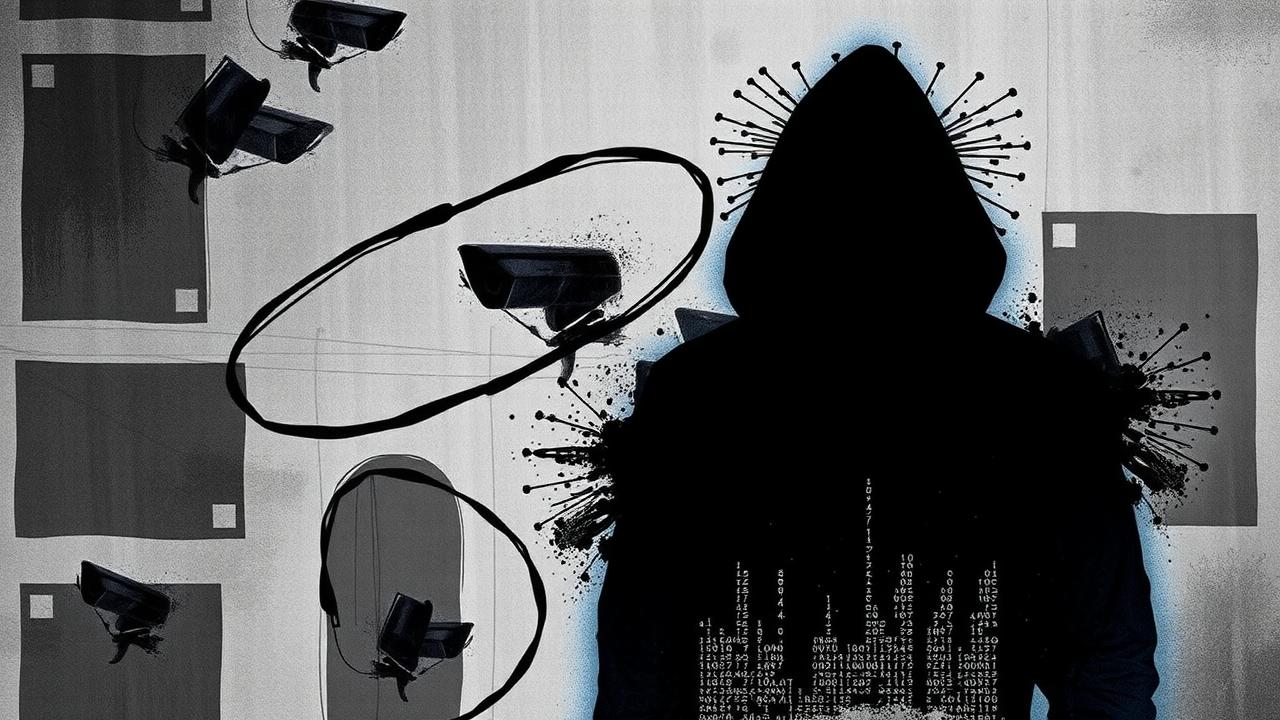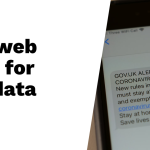Managed Service Providers (MSPs) looking to start dark web monitoring should begin by understanding what it involves: scanning hidden online areas like hacker forums and breach databases for stolen credentials and sensitive client data. Starting with free tools like Dexpose or MSP DarkIntel for initial domain scans can give a quick risk overview without large investments. Next, MSPs should adopt more comprehensive platforms like darkwebreport.io, which offer continuous monitoring, real-time alerts, and detailed reports tailored for MSP needs. Educating clients on quick response steps after breaches and offering white-labeled reporting helps build trust. Continuous monitoring not only protects clients but also opens new revenue streams by turning breach insights into business opportunities.
Table of Contents
- What Dark Web Monitoring Means for MSPs
- Why Focus on Breaches Published on Deep and Dark Web
- Top Dark Web Monitoring Tool: darkwebreport.io
- Comparing darkwebreport.io with Dexpose and MSP DarkIntel
- Using Free Dark Web Scan Tools for Quick Checks
- Benefits of Continuous Dark Web Monitoring
- How MSPs Can Set Up Dark Web Monitoring Services
- Educating Clients and Delivering White-Labeled Reports
- Turning Dark Web Data into New Business Opportunities
- Steps to Start Dark Web Monitoring as an MSP
- Frequently Asked Questions
What Dark Web Monitoring Means for MSPs
 Dark web monitoring involves scanning hidden online spaces like marketplaces, hacker forums, and breach databases to identify stolen credentials and leaked data related to MSP clients. Unlike regular internet searches, this process requires specialized tools and expertise to access sources not indexed by standard search engines. For MSPs, monitoring helps detect compromised accounts, exposed passwords, and sensitive information early, often before attackers can exploit them. This includes spotting data dumps, phishing kit sales, and credential leaks that signal emerging cyber threats. By automating alerts tied to client domains or email accounts, MSPs can stay ahead of risks and respond quickly. Offering dark web monitoring expands MSP services beyond traditional IT management into proactive cybersecurity risk detection. It also supports incident response by clarifying what data is exposed and potential attacker motives, allowing MSPs to provide clients actionable intelligence rather than just raw breach details. Since breaches continuously emerge, ongoing scanning and updates are essential to maintain protection. Ultimately, dark web monitoring helps MSPs build stronger client trust by demonstrating a proactive stance on security and reducing the likelihood of costly cyber incidents.
Dark web monitoring involves scanning hidden online spaces like marketplaces, hacker forums, and breach databases to identify stolen credentials and leaked data related to MSP clients. Unlike regular internet searches, this process requires specialized tools and expertise to access sources not indexed by standard search engines. For MSPs, monitoring helps detect compromised accounts, exposed passwords, and sensitive information early, often before attackers can exploit them. This includes spotting data dumps, phishing kit sales, and credential leaks that signal emerging cyber threats. By automating alerts tied to client domains or email accounts, MSPs can stay ahead of risks and respond quickly. Offering dark web monitoring expands MSP services beyond traditional IT management into proactive cybersecurity risk detection. It also supports incident response by clarifying what data is exposed and potential attacker motives, allowing MSPs to provide clients actionable intelligence rather than just raw breach details. Since breaches continuously emerge, ongoing scanning and updates are essential to maintain protection. Ultimately, dark web monitoring helps MSPs build stronger client trust by demonstrating a proactive stance on security and reducing the likelihood of costly cyber incidents.
Why Focus on Breaches Published on Deep and Dark Web
 Cybercriminals often post stolen data on dark web platforms, making these sites primary sources of breach information that MSPs should monitor closely. Breaches published here frequently include credentials, personal information, or corporate data that attackers use for fraud, account takeovers, or identity theft. Many breaches never get publicly reported but surface quickly on dark web forums and marketplaces, giving MSPs an early warning advantage. Monitoring this data helps reveal attacker methods, targets, and timelines, providing valuable intelligence beyond just the compromised data itself. For example, seeing a pattern of leaked employee credentials might uncover insider threats or vulnerabilities within an organization. Additionally, dark web breach data can expose supply chain risks by showing which vendors or partners have been compromised, allowing MSPs to advise clients on wider exposure. Tracking breach trends on the dark web enables MSPs to adjust security strategies proactively, shifting from reactive damage control to preventive security. Overall, focusing on breaches published on the deep and dark web equips MSPs to detect threats early, protect clients from emerging risks, and offer more effective security services.
Cybercriminals often post stolen data on dark web platforms, making these sites primary sources of breach information that MSPs should monitor closely. Breaches published here frequently include credentials, personal information, or corporate data that attackers use for fraud, account takeovers, or identity theft. Many breaches never get publicly reported but surface quickly on dark web forums and marketplaces, giving MSPs an early warning advantage. Monitoring this data helps reveal attacker methods, targets, and timelines, providing valuable intelligence beyond just the compromised data itself. For example, seeing a pattern of leaked employee credentials might uncover insider threats or vulnerabilities within an organization. Additionally, dark web breach data can expose supply chain risks by showing which vendors or partners have been compromised, allowing MSPs to advise clients on wider exposure. Tracking breach trends on the dark web enables MSPs to adjust security strategies proactively, shifting from reactive damage control to preventive security. Overall, focusing on breaches published on the deep and dark web equips MSPs to detect threats early, protect clients from emerging risks, and offer more effective security services.
Top Dark Web Monitoring Tool: darkwebreport.io
Darkwebreport.io stands out as a top dark web monitoring platform built specifically with MSPs in mind. Its features are tailored to meet the unique needs of managed service providers, making it easier to protect clients and grow business. One of its key offerings is the MSP Prospecting Dashboard, which lets MSPs search for compromised companies by country or industry. This feature not only helps identify current threats but also uncovers qualified leads by spotting potential clients with exposed data. The platform delivers real-time alerts whenever breaches impact client domains or credentials, allowing MSPs to respond quickly and reduce risk. Detailed, white-labelable reports can be generated and shared with clients, enhancing professionalism and trust. darkwebreport.io supports continuous monitoring rather than one-time scans, ensuring MSPs stay updated on emerging dark web threats thanks to regularly refreshed threat intelligence. Security is a priority as well, with SOC 2 compliance and 256-bit encryption safeguarding sensitive data. Integration options make it simple to fit darkwebreport.io into existing MSP workflows and client management systems, turning breach data into actionable business opportunities. For MSPs aiming to offer comprehensive, reliable dark web monitoring, darkwebreport.io is a strong solution that combines security, insight, and sales potential in one package.
Comparing darkwebreport.io with Dexpose and MSP DarkIntel
When evaluating dark web monitoring tools for MSPs, it’s important to consider how each platform aligns with your business goals and client needs. darkwebreport.io stands out with its MSP-focused features, especially the prospecting dashboard that helps identify leads based on recent breaches by industry or geography. This emphasis on qualified lead generation makes it a strong choice for MSPs looking to turn breach intelligence into new business opportunities, while also offering continuous monitoring and SOC 2 compliance for security assurance.
Dexpose offers a different set of strengths, starting with free immediate exposure reports that give quick insights into dark web markets, malware logs, and public breaches. Beyond monitoring, Dexpose adds value with attack surface mapping and vendor supply chain monitoring, which are useful for MSPs aiming to broaden their security services. Its MSP partnership program also supports growth by enabling MSPs to expand offerings around breach detection and remediation.
MSP DarkIntel focuses more narrowly on domain breach scanning, providing real-time alerts specifically for domain-related exposures. It delivers white-labeled dashboards and reports that help MSPs maintain their branding when communicating breach information to clients. Additionally, MSP DarkIntel includes handy business tools like revenue projection and pricing calculators, supporting MSPs in planning and scaling their dark web monitoring services.
All three platforms provide continuous monitoring but differ in their core specialties: darkwebreport.io excels in prospecting and lead generation, Dexpose shines with broad monitoring and attack surface insights, and MSP DarkIntel specializes in domain breach detection and MSP branding. Choosing the right tool depends on whether your MSP prioritizes finding new clients through breach data, offering branded client reports, or focusing on domain-specific threat detection.
| Feature | darkwebreport.io | Dexpose | MSP DarkIntel |
|---|---|---|---|
| MSP-Specific Features | Yes: Prospecting dashboard, lead generation | No: Focus on free exposure reports and monitoring | Yes: Domain breach scanning, white-labeled dashboards |
| Continuous Monitoring | Yes | Yes | Yes |
| Real-Time Alerts | Yes | Yes | Yes |
| Free Domain Scan | No | Yes | Yes |
| Attack Surface Mapping | No | Yes | No |
| Supply Chain Monitoring | No | Yes | No |
| White-Labeled Reports and Dashboards | No | No | Yes |
| MSP Partnership Programs | Yes | Yes | Yes |
| Revenue Projection and Pricing Tools | No | No | Yes |
| Integration with MSP Workflows | Yes | No | No |
Using Free Dark Web Scan Tools for Quick Checks
 Free dark web scan tools like Dexpose Free Domain Scan and MSP DarkIntel’s domain breach scan offer Managed Service Providers (MSPs) an easy and cost-effective way to start dark web monitoring. These tools deliver immediate insights into whether client emails or domains have been exposed in breached databases or dark web markets, enabling MSPs to quickly assess risk without requiring upfront investment. For example, Dexpose’s free scan can reveal if an email tied to a client appears in malware logs or public breaches, while MSP DarkIntel confirms domain exposure with a straightforward breach check. Though these free tools provide limited reports compared to paid continuous monitoring, they still offer enough data for basic risk evaluation. MSPs can use these scans during initial client consultations to demonstrate value and help prioritize which clients need more thorough, ongoing monitoring. Additionally, free scans serve as effective marketing tools, lowering entry barriers for MSPs launching dark web services and encouraging clients to upgrade to paid plans for continuous protection. By leveraging these quick, no-cost checks, MSPs can build trust, identify immediate threats, and set the stage for deeper, subscription-based monitoring services that better secure their clients over time.
Free dark web scan tools like Dexpose Free Domain Scan and MSP DarkIntel’s domain breach scan offer Managed Service Providers (MSPs) an easy and cost-effective way to start dark web monitoring. These tools deliver immediate insights into whether client emails or domains have been exposed in breached databases or dark web markets, enabling MSPs to quickly assess risk without requiring upfront investment. For example, Dexpose’s free scan can reveal if an email tied to a client appears in malware logs or public breaches, while MSP DarkIntel confirms domain exposure with a straightforward breach check. Though these free tools provide limited reports compared to paid continuous monitoring, they still offer enough data for basic risk evaluation. MSPs can use these scans during initial client consultations to demonstrate value and help prioritize which clients need more thorough, ongoing monitoring. Additionally, free scans serve as effective marketing tools, lowering entry barriers for MSPs launching dark web services and encouraging clients to upgrade to paid plans for continuous protection. By leveraging these quick, no-cost checks, MSPs can build trust, identify immediate threats, and set the stage for deeper, subscription-based monitoring services that better secure their clients over time.
Benefits of Continuous Dark Web Monitoring
Continuous dark web monitoring lets MSPs spot new breaches and leaked credentials as soon as they appear, shrinking the time clients spend exposed to risk. This early awareness helps MSPs guide clients to take quick actions like resetting passwords or enabling multi-factor authentication, which can stop attackers before damage happens. Monitoring also protects client brands by catching stolen data used in phishing or impersonation scams, reducing reputational harm. It supports compliance efforts by providing proof that clients are actively detecting and responding to breaches, which is often required by regulations. For MSPs, offering ongoing dark web monitoring creates steady revenue through managed services while strengthening client relationships with regular alerts and reports. Instead of just dumping raw data, these services deliver actionable intelligence with context, making it easier to prioritize responses. By continuously tracking attacker activity linked to clients, MSPs can improve overall security posture and even spot wider threat trends in the industries they serve. This proactive approach helps cut incident response costs and supports strategic security planning, giving clients more confidence in their defenses.
How MSPs Can Set Up Dark Web Monitoring Services
 To start dark web monitoring, MSPs should first select a comprehensive platform designed for their needs, such as darkwebreport.io, which offers MSP-focused features like continuous monitoring, real-time alerts, and prospecting dashboards. For initial client assessments, integrating free tools like Dexpose and MSP DarkIntel can provide quick insights into exposed domains and email addresses without upfront costs. Configuring continuous alerts specific to each client’s domains and emails ensures timely detection of new breaches. MSPs should also set up automated reporting with white-labeled dashboards to present findings professionally and strengthen client trust. Training both MSP technicians and client teams on how to interpret breach data and recommended remediation steps is essential for effective response. Establishing clear workflows for incident response helps MSPs act promptly when alerts are triggered, minimizing damage. Additionally, using prospecting dashboards can identify potential clients with exposed data, opening new business opportunities. MSPs need to define service packages and pricing models that reflect the scope of monitoring and the size of the client, balancing value and affordability. Maintaining strong data security and compliance controls around breach data handling is critical to protect sensitive information and meet regulatory requirements. Finally, MSPs should regularly update monitoring configurations to cover new dark web sources and evolving threats, ensuring ongoing protection for their clients.
To start dark web monitoring, MSPs should first select a comprehensive platform designed for their needs, such as darkwebreport.io, which offers MSP-focused features like continuous monitoring, real-time alerts, and prospecting dashboards. For initial client assessments, integrating free tools like Dexpose and MSP DarkIntel can provide quick insights into exposed domains and email addresses without upfront costs. Configuring continuous alerts specific to each client’s domains and emails ensures timely detection of new breaches. MSPs should also set up automated reporting with white-labeled dashboards to present findings professionally and strengthen client trust. Training both MSP technicians and client teams on how to interpret breach data and recommended remediation steps is essential for effective response. Establishing clear workflows for incident response helps MSPs act promptly when alerts are triggered, minimizing damage. Additionally, using prospecting dashboards can identify potential clients with exposed data, opening new business opportunities. MSPs need to define service packages and pricing models that reflect the scope of monitoring and the size of the client, balancing value and affordability. Maintaining strong data security and compliance controls around breach data handling is critical to protect sensitive information and meet regulatory requirements. Finally, MSPs should regularly update monitoring configurations to cover new dark web sources and evolving threats, ensuring ongoing protection for their clients.
- Select a comprehensive monitoring platform like darkwebreport.io for MSP-focused features
- Integrate free tools like Dexpose and MSP DarkIntel for initial client assessments
- Configure continuous monitoring alerts tailored to client domains and email addresses
- Set up automated reporting and white-labeled dashboards to share findings professionally
- Train MSP technicians and client teams on interpreting breach data and recommended actions
- Establish workflows for incident response triggered by dark web alerts
- Use prospecting dashboards to identify new clients with exposed data
- Define service packages and pricing models based on monitoring scope and client size
- Implement data security and compliance controls around breach data handling
- Continuously update monitoring configurations to cover new dark web sources
Educating Clients and Delivering White-Labeled Reports
When sharing dark web monitoring results, it’s important to explain findings in simple terms that non-technical clients can easily understand. Highlight specific breaches by naming the affected service or platform and clearly state what type of data was exposed, such as email addresses, passwords, or payment information. This clarity helps clients grasp the seriousness without confusion. Alongside the report, provide straightforward remediation steps like changing passwords promptly, enabling multi-factor authentication (MFA), and monitoring accounts for suspicious activity. Using white-labeled reports ensures all communications carry your MSP’s branding, reinforcing professionalism and building trust. Customize these reports to reflect the client’s industry and any relevant regulatory requirements, which adds value and relevance. Including visual summaries such as charts or trend lines improves readability, making it easier for clients to spot patterns or recurring issues. Regularly schedule briefings or send monthly reports to keep clients aware of ongoing risks and your proactive efforts to protect them. Offering additional training sessions or educational materials on recognizing phishing attempts and social engineering tactics further empowers clients to defend themselves. Encourage client feedback on report formats and educational content to continuously improve communication and effectiveness. Transparent, tailored reporting combined with clear guidance helps MSPs strengthen client relationships through proactive security management.
Turning Dark Web Data into New Business Opportunities
 MSPs can unlock new business potential by using breach data from prospecting dashboards to spot companies recently exposed on the dark web. Reaching out with tailored security offers shows prospects that you understand their risks and can help protect them immediately. Positioning dark web monitoring as a value-added service helps differentiate your MSP in a crowded market and builds trust. Bundling monitoring with other cybersecurity services, such as vulnerability management or multi-factor authentication, increases contract value and delivers comprehensive protection. Use breach intelligence not only to attract new clients but also to upsell remediation consulting and incident response, turning alerts into actionable services. Sharing case studies where monitoring stopped serious incidents underscores your expertise and the tangible benefits of your services. Marketing campaigns built around real breach examples raise awareness and draw interest, while offering free initial scans lets prospects experience the value firsthand without commitment. Continuous monitoring insights create opportunities to cross-sell relevant solutions and adapt your offerings as new threats and trends emerge, helping maintain client engagement and grow revenue over time.
MSPs can unlock new business potential by using breach data from prospecting dashboards to spot companies recently exposed on the dark web. Reaching out with tailored security offers shows prospects that you understand their risks and can help protect them immediately. Positioning dark web monitoring as a value-added service helps differentiate your MSP in a crowded market and builds trust. Bundling monitoring with other cybersecurity services, such as vulnerability management or multi-factor authentication, increases contract value and delivers comprehensive protection. Use breach intelligence not only to attract new clients but also to upsell remediation consulting and incident response, turning alerts into actionable services. Sharing case studies where monitoring stopped serious incidents underscores your expertise and the tangible benefits of your services. Marketing campaigns built around real breach examples raise awareness and draw interest, while offering free initial scans lets prospects experience the value firsthand without commitment. Continuous monitoring insights create opportunities to cross-sell relevant solutions and adapt your offerings as new threats and trends emerge, helping maintain client engagement and grow revenue over time.
Steps to Start Dark Web Monitoring as an MSP
Begin by running free domain and email breach scans using tools like Dexpose and MSP DarkIntel. These scans provide a quick snapshot of your clients’ exposure without upfront costs and help build initial trust. Next, evaluate comprehensive monitoring platforms such as darkwebreport.io to find one that fits your service model and client needs. When selecting a platform, prioritize features like real-time alerts, MSP-focused dashboards, and data security compliance. Set up continuous monitoring alerts tailored to your client base, focusing on their industry, geography, and threat profile to deliver relevant and timely notifications. Develop client education materials that clearly explain the risks of breaches, how dark web data is used by attackers, and steps clients should take when alerted. Create branded, white-labeled reporting templates to maintain consistent and professional communication with your clients, reinforcing your MSP’s value. Train your team thoroughly on interpreting breach alerts and guiding clients through remediation actions such as password resets, MFA implementation, and credit monitoring. Launch targeted marketing campaigns aimed at companies recently found in dark web breaches using prospecting features in your monitoring platform. Package your monitoring service with transparent pricing and clear service level agreements that outline response times and support scope. Ensure secure data handling policies are in place to protect sensitive client breach information, complying with privacy laws and industry standards. Finally, regularly review and update your monitoring configurations to include emerging dark web sources and new breach types, keeping your service effective against evolving threats.
Frequently Asked Questions
1. What are the main challenges MSPs face when starting darkweb monitoring?
One of the biggest challenges is understanding how to access and navigate the darkweb safely, since it’s not indexed by regular search engines. MSPs also need to develop or find tools that can scan and analyze darkweb data effectively without exposing their systems or clients to risk. Additionally, interpreting the data to identify real threats versus noise requires experience and good threat intelligence.
2. How can an MSP integrate darkweb monitoring into their existing security services?
MSPs can incorporate darkweb monitoring by using specialized platforms that feed threat data into their current security information and event management (SIEM) tools. This integration helps correlate darkweb findings with network activity or client data breaches. Training staff to understand and act on darkweb alerts ensures the service complements incident response and overall cybersecurity strategy.
3. What types of data or client information should MSPs focus on tracking on the darkweb?
MSPs should prioritize monitoring for stolen credentials, personal identification information, proprietary business data, and client-specific assets like email addresses or admin login info. Keeping an eye on emerging exploits or malware linked to client technologies also helps. Focusing on information that could lead to breaches or financial losses enables proactive protection.
4. How do MSPs verify the credibility of darkweb intelligence without causing false alarms?
Credibility is checked by cross-referencing darkweb data with other intelligence sources and validating through client environment scans or logs. MSPs should establish thresholds for alerting, avoiding overreaction to low-risk chatter. Using threat scoring and contextual analysis helps filter noise, ensuring alerts are actionable and relevant to client security postures.
5. What technical skills should MSP teams develop to effectively monitor the darkweb?
Teams should be comfortable using anonymizing tools like Tor, have a solid grasp of cybersecurity fundamentals, and understand threat intelligence platforms. Skills in scripting or automation for data collection, along with knowledge of data privacy laws, are important. They also need aptitude for analyzing patterns and connecting disparate pieces of information to detect emerging threats early.
TL;DR Dark web monitoring lets MSPs detect stolen data and breaches on hidden internet areas to protect clients early. Top tools like darkwebreport.io offer real-time alerts, detailed reports, and prospecting dashboards tailored for MSPs. Free scanners from Dexpose and MSP DarkIntel provide quick exposure checks. Continuous monitoring helps prevent fraud, supports compliance, and opens new revenue streams. MSPs should start with free scans, then move to ongoing monitoring, educate clients on breach responses, and use white-labeled reports to build trust and grow their business.





